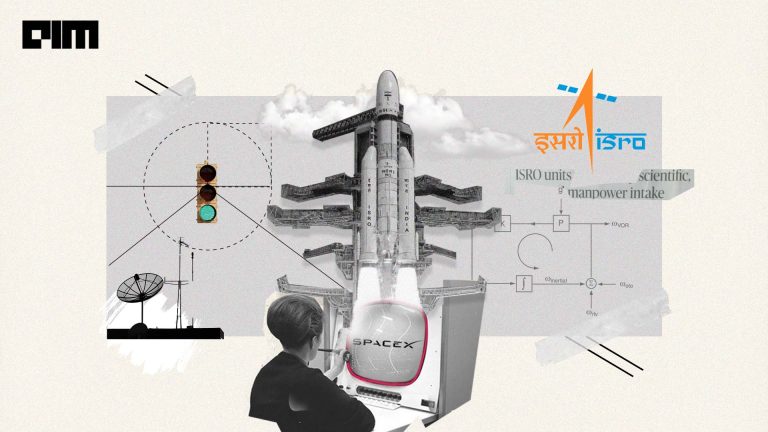With the resounding success of Chandrayaan 3, the successful launch of Aditya-L1—India’s mission to the L1 range to study the sun, and the release of India’s Space Policy 2023, this year has accelerated India’s growth in the space sector by an astounding margin and has brought global attention to the country’s efforts in the vast unexplored expanse of space.
However, the Indian Space Research Organisation is not in the mood for a breather and has a number of missions lined up for the upcoming year. These missions ranging from India’s manned mission to space to the exploration of Venus are ready to push past existing limits.
1. X-ray Polarimeter Satellite
The year is going to start with a bang with ISRO all set to launch the first mission on the very first day of the year.
ISRO’s XPoSat mission, set to launch via a Polar Satellite Launch Vehicle (PSLV) at 9:10 am, aims to unravel complexities in understanding celestial light. Over five years, the mission will gauge light wave vibrations to decode radiation mechanisms and celestial geometry, marking a significant leap in comprehension. The spacecraft houses two key scientific payloads: POLIX (Polarimeter Instrument in X-rays) and XSPECT (X-ray Spectroscopy and Timing). POLIX will measure polarisation in the medium X-ray range (8-30 keV), while XSPECT offers spectroscopic insight (0.8-15 keV). These payloads collectively enable the mission to delve into temporal, spectral, and polarimetric aspects of bright X-ray sources, aiding in comprehending the emission mechanisms of cosmic entities like black holes, neutron stars, and pulsar wind nebulae.
Additionally, the insertion of Aditya L1 in the Langragian point1 is also scheduled for January 6th, which is sure to make the first month of the year quite memorable.
2. INSAT 3DS
Following the XPoSat mission India is all set to launch the INSAT 3DS around January 12. INSAT-3DS is a meteorological satellite which will be launched using ISRO’s Geosynchronous Launch Vehicle (GSLV-F14). The INSAT-3DS mission, a collaboration between ISRO and IMD, aims to enhance climate services through a network of climate observatory satellites. It’s part of a multi-mission meteorological data system, launching three dedicated Earth observation satellites. This final launch includes INSAT-3DR, a meteorological satellite featuring a 19-channel sounder, a 6-channel imager, and specific payloads. Successfully launched in 2016, INSAT-3DR is the improved successor to INSAT-3D, omitting additional communication payloads.
The upcoming INSAT-3DS mission marks the seventh flight in the INSAT-3D series, undergoing vibration tests as of November 10, 2023, signalling its readiness for launch.
3. NISAR
The Nasa-Isro Synthetic Aperture Radar mission (NISAR), a collaborative effort between India and the US, is set for a probable launch in the first quarter of the upcoming year, around late February or early March. It’s a Low Earth Orbit (LEO) observatory designed to map the Earth every 12 days, offering consistent data for understanding ecosystem changes, ice mass variations, sea level rise, and natural hazards like earthquakes, tsunamis, and volcanoes.
This mission employs dual-band Synthetic Aperture Radar (SAR) in L and S bands, utilizing the Sweep SAR technique for high-resolution data over a wide area. The observatory consists of SAR payloads on the Integrated Radar Instrument Structure (IRIS) and the spacecraft bus. Jet Propulsion Laboratories and ISRO collaborate on the observatory, catering to national needs and supporting scientific research on surface deformation through repeat-pass InSAR.
In this partnership, NASA provides the L-Band SAR payload, while ISRO contributes the S-Band SAR payload, both using a common large reflector antenna. Additionally, NASA offers engineering payloads like the Payload Data Subsystem, High-rate Science Downlink System, GPS receivers, and a Solid State Recorder.
NISAR’s significance lies in being the first dual-frequency radar imaging mission using advanced Sweep SAR techniques, providing high-resolution L and S band SAR data. This capability aids in studying various complex phenomena like ecosystem changes, ice sheet behavior, and natural hazards, fostering microwave remote sensing applications in geosciences.
4. Gaganyaan 1
The Gaganyaan 1 project, scheduled for launch later this year, aims to demonstrate India’s human spaceflight capability by sending a crew of three members to orbit 400 km above Earth for a three-day mission, returning safely by landing in Indian sea waters.
Precursor missions like the Integrated AirDrop Test (IADT), Pad Abort Test (PAT), and Test Vehicle (TV) flights have been planned to demonstrate technology readiness levels before the actual human spaceflight mission. However, from this set, the Crew Escape System has already been validated. Unmanned missions preceding the manned mission will ensure the safety and reliability of all systems.
The Gaganyaan mission will utilise the Human Rated LVM3 rocket, derived from the well-proven LVM3 launcher. This launch vehicle is adapted to meet human rating requirements and features the Crew Escape System (CES) to ensure crew safety during emergencies.
The Orbital Module (OM) comprises the Crew Module (CM) and Service Module (SM). The CM provides a habitable space for the crew in space, equipped with life support systems, avionics, and deceleration systems for crew safety during descent. The SM supports the CM with thermal, propulsion, power, and avionics systems.
Several new technologies, engineering systems, and human-centric systems are being developed to ensure human safety during the mission. The Astronaut Training Facility in Bengaluru conducts diverse training covering academic courses, flight systems, microgravity familiarisation, aero-medical training, recovery, and survival techniques to prepare the crew for the Gaganyaan mission.
5. Mangalyaan 2
Following India’s historic entry into Mars’ orbit 9 years ago in 2014 with Mangalyaan-1, ISRO is preparing for the Mangalyaan-2 mission, slated for launch in 2024. France will collaborate with India for this mission, intending to probe Mars for signs of life and water. Mangalyaan-2 aims to study various aspects of Mars, including interplanetary dust and the Martian atmosphere.
This mission will carry four payloads: MODEX to analyse the origin and distribution of dust on Mars, a Radio Occultation experiment for studying the Martian atmosphere, an Energetic Ion Spectrometer to characterize solar particles, and a Langmuir Probe and Electric Field Experiment to understand Mars’ plasma environment.
During the then French President Francois Hollande’s visit to India, a partnership was formed between CNES and ISRO in 2016, signing agreements to jointly develop a Mars lander for exploration. The mission is aimed at discovering potential signs of life and water on Mars.
Mangalyaan-1 was launched in 2013, with the orbiter successfully entering Mars’ orbit after a nine-month journey. India’s accomplishment with Mangalyaan-1 marked the first time a probe reached Mars on its initial attempt, distinguishing it from previous European, American, and Russian missions that required multiple tries.
6. Shukrayaan 1
ISRO has also turned its attention to Venus, progressing with the development of the Venus mission, often called Shukrayaan-1. The mission aims to comprehensively study Venus’ surface and atmosphere, exploring its geological composition and atmospheric characteristics. The craft, derived from Sanskrit words meaning “Venus” and “craft,” is being configured with various payloads for this purpose.
Shukrayaan-1’s development started in 2012 when ISRO called for payload proposals from research institutes. While progressing steadily, key details such as the launch date are yet to be revealed by ISRO. Previous missions to Venus by agencies like the European Space Agency and Japan, along with flybys from NASA’s Parker Solar Probe, have contributed valuable data, including the recent capture of visible light images of Venus’ surface by NASA in February 2022 during a flyby.
Despite Venus’ harsh conditions with a dense atmosphere filled with acids and extremely high atmospheric pressure, akin to a hundred times that of Earth, scientists remain intrigued by the planet often referred to as “Earth’s twin.” There’s an ongoing debate about the possibility of microbial life in Venus’ upper atmosphere, despite doubts expressed by NASA about life on the planet.



















































































